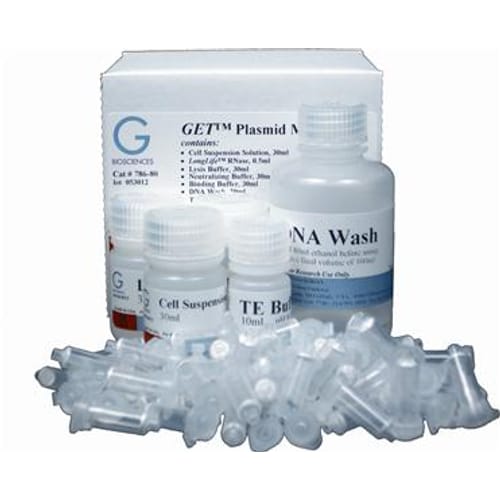Plasmid isolation is crucial to biology and an essential step in various procedures, including cloning, DNA sequencing, transfection, in vitro translation, blotting, and gene therapy. However, these applications require the isolation of high-purity plasmid DNA. Whereas genomic DNA extraction is simple and straightforward, plasmid DNA extraction can be more complicated.
In plasmid isolation, you must be able to identify and use the appropriate lysis method to extract plasmid DNA successfully. Therefore, you must use a milder treatment such as alkaline lysis. Alkaline lysis is a mild treatment and the preferred method of plasmid DNA isolation and extraction. It isolates plasmid DNA and other cell components such as proteins by breaking cells apart with an alkaline solution. Precipitation removes the proteins, and the plasmid DNA recovers with alcohol precipitation.
How to Extract Plasmid DNA
Cultivate Bacterial Samples
First, the bacterial cells must cultivate in varying amounts of growth medium. Typically, you will incorporate an antibiotic into the growth media, and the plasmid DNA will pass resistance to the antibiotic to the bacteria. You can remove cells from the growth medium and discard the supernatant through centrifugation. At the end of this step, the cells will become cell pellets.
Resuspend the Pelleted Cells in Buffer Solution
Next, you should resuspend the cells in an isotonic solution that contains Tris, EDTA (to destabilize the cell wall and prevent plasmid damage), glucose (to prevent the cells from bursting), and RNase A (to degrade cellular RNA during cell lysis).
Lyse the Cells
You will then add an alkaline solution containing sodium hydroxide and sodium dodecyl sulfate (SDS) to facilitate cell lysis and the denaturation of both genomic and plasmid DNA along with all the proteins in the solution. The highly alkaline solution consisting of NaOH and SDS breaks down the cell membranes and converts the double-stranded DNAs (dsDNA) to single-stranded DNAs (ssDNA).
Neutralize the Solution with Potassium Acetate
A potassium acetate solution neutralizes the sample and separates the plasmid DNA from the genomic DNA (gDNA). The smaller plasmid DNA renatures easily, while the larger, more complicated genomic DNA precipitates out of the solution.
Upon centrifugation, genomic DNA and precipitated proteins form a pellet while plasmid DNA remains soluble. The remaining plasmid DNA in the supernatant can be precipitated with ethanol or purified using spin filter technology or a phenol-chloroform mixture.
Precipitate Plasmid DNA with Ethanol Precipitation
Finally, you must isolate the plasmid DNA through a process known as ethanol precipitation. Once precipitated, you should rinse the precipitate (the plasmid DNA) in ice-cold 70% ethanol and let it dry for about 10 minutes so the alcohol can evaporate. You must also resuspend the DNA pellet in a buffer solution containing Tris, EDTA, and RNases to clean all of the remaining RNAs in the solution.
Tips to Consider for Plasmid Isolation
Plasmid isolation can be challenging, which is why you should consider the following tips when extracting plasmid DNA:
- Perform cell lysis quickly to avoid irreversibly denaturing the plasmid.
- The resuspension and lysis buffers should be mixed thoroughly, so make sure you do not combine it vigorously to prevent the DNA from breaking into smaller fragments. If they are small enough, broken gDNA can reanneal and remain in the solution.
- Wear gloves and appropriate eye protection when working with harsh chemicals such as NaOH and SDS.
G-Biosciences is Your Go-To for Plasmid DNA Extraction
At G-Biosciences, we offer a variety of kits and products for your plasmid isolation applications. To place your order, visit our website or contact us today.






